<Back to Index>
- Prince of the Imperial House of Japan Chichibu, 1902
- 43rd Prime Minister of Japan Prince Naruhiko Higashikuni, 1887
PAGE SPONSOR
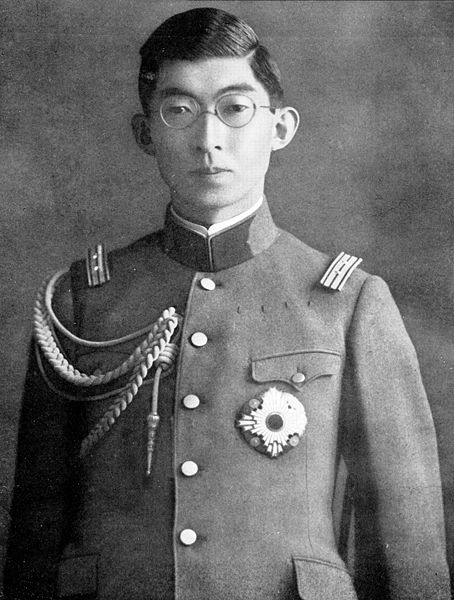
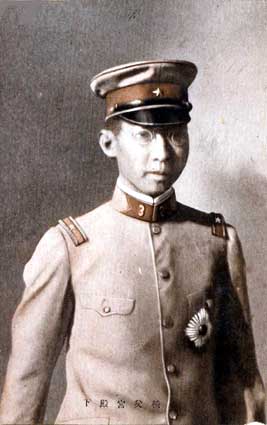
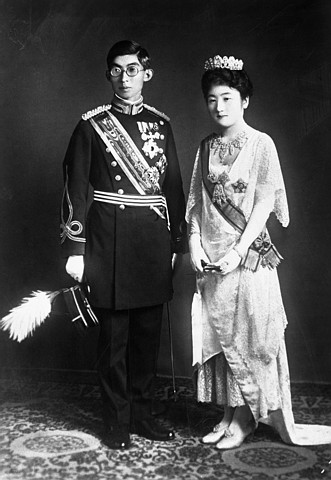
Prince Chichibu, GCVO (秩父宮 雍仁 Chichibu no miya Yasuhito Shinnō, 25 June 1902 – 4 January 1953), also known as Prince Yasuhito, was the second son of Emperor Taishō and a younger brother of the Emperor Shōwa. As a member of the Imperial House of Japan, he was the patron of several sporting, medical and international exchange organizations. Before and after World War II, the English speaking prince and his wife attempted to foster good relations between Japan and the United Kingdom and enjoyed a good rapport with the British Royal Family. As with other Japanese imperial princes of his generation, he was an active duty career officer in the Imperial Japanese Army. Like all members of the imperial family, he was exonerated from criminal prosecutions before the Tokyo tribunal by Douglas MacArthur.
Born at Aoyama Detached Palace in Tokyo, the second son of Crown Prince Yoshihito (later Emperor Taishō) and Crown Princess Sadako (later Empress Teimei), the prince was originally titled Atsu no miya (Prince Atsu). He and his elder brother were separated from their parents and entrusted to the care of a respected ex-naval officer, Count Sumiyoshi Kawamura and his wife. After Kawamura died in 1904, the young princes rejoined their parents at the Tōgū-gosho (Crown Prince's residence) on the grounds of the Akasaka estate. He attended the elementary and secondary departments of the Gakushuin Peers' School along with Crown Prince Hirohito, and his younger brother, Prince Nobuhito (born in 1905). (A fourth brother, Prince Takahito, was born in 1915). Prince Chichibu enrolled in the Central Military Preparatory School in 1917 and then in the Imperial Japanese Army Academy in 1922.
On 26 May 1922, Emperor Taishō granted his second son the title Chichibu no miya and the authorization to start a new branch of the imperial family. In 1925, the Prince went to Great Britain to study at Magdalen College, Oxford. While in Great Britain King George V decorated Prince Chichibu with the Grand Cross of the Royal Victorian Order. Prince Chichibu had a reputation as an outdoorsman and alpinist during his stay in Europe. He returned to Japan in January 1927 following the death of Emperor Taishō, who for some time had suffered from debilitating physical and mental ill health. Until the birth of his nephew Crown Prince Akihito in December 1933, Prince Chichibu was heir presumptive to the Chrysanthemum throne.
On 28 September 1928, the prince married Matsudaira Setsuko (9 September 1909 - 25 August 1995 (aged 85)), the daughter of Matsudaira Tsuneo, Japanese ambassador to the United States and later Great Britain (and later, Imperial Household Minister), and his wife, the former Nabeshima Nobuko. Although technically born a commoner, the new princess was a scion of the Matsudaira of Aizu, a cadet branch of the Tokugawa shogunate. Her paternal grandfather was Matsudaira Katamori, the last daimyo of Aizu, whose heir had been created a viscount in the new kazoku system in 1884. Prince and Princess Chichibu had no children, as Princess Chichibu's only pregnancy ended in a miscarriage.
Prince Chichibu received his commission as a second lieutenant in the infantry in October 1922 and was assigned to the First Imperial Guard Division. He was promoted to first lieutenant in 1925 and became a captain in 1930 after graduation from the Army War College. He received a promotion to the rank of major and assigned to command the Thirty First Infantry Division stationed at Hirosaki, Aomori, in August 1935.
Prince Chichibu has been implicated by some historians in the abortive 26 February Incident in 1936. How much of a role he actually played in that event remains unclear, but it was clear that he was sympathetic to the rebels and that his political sentiments were in agreement with them, i.e., replacement of the corrupt political party based government with a military dictatorship under direct control of the emperor. His sympathy to the Kodoha faction within the Imperial Japanese Army was well known at the time. After the assassination of prime minister Inukai Tsuyoshi in 1932, he had many violent arguments with his brother, Emperor Hirohito, about the suspension of the constitution and the implementation of direct imperial rule.
After the coup attempt, the prince and his wife were sent on a tour of Europe taking several months. They represented Japan at the May 1937 coronation of Britain's King George VI and Queen Elizabeth in Westminster Abbey and subsequently visited Sweden and the Netherlands as the guests of King Gustav V and Queen Wilhelmina, respectively. This tour ended with the visit of Nuremberg in Germany by the prince alone. There he attended the Nuremberg rally and met Adolf Hitler, with whom he tried to boost relations. At Nuremberg castle, Hitler launched a scathing attack against Joseph Stalin, after which the prince privately said to his aide - de - camp Masaharu Homma: "Hitler is an actor, it will be difficult to trust him." Nevertheless he remained convinced that the future of Japan was linked to Nazi Germany; and in 1938 and 1939, he had many quarrels with the Emperor about the opportunity to join a military alliance with Germany against Great Britain and the United States.
Prince Chichibu Yasuhito was subsequently appointed battalion commander of Thirty - First Infantry Regiment in August 1937; promoted to lieutenant colonel in 1938; and finally to colonel in August 1939. During the war, he was involved in combat operations, and was sent to Manchukuo before the Nomonhan incident and to Nanjing after the Nanjing massacre. On 9 February 1939, Chichibu attended a lecture on bacteriological warfare, given by Shiro Ishii, in the War Ministry Grand Conference Hall in Tokyo. He also attended vivisection demonstrations by Ishii.
In a book about Yamashita's gold, authors Peggy and Sterling Seagrave postulated that Prince Chichibu led from 1937 to 1945 what the authors called the “Golden Lily (Kin no yuri) Operation” by which members of the Imperial Household allegedly were personally involved in stealing treasures from countries invaded by Japan during World War II. These allegations are contrary to official version, as told in her memoirs by Princess Chichibu (Setsuko), according to which the prince retired from active duty after being diagnosed with pulmonary tuberculosis in June 1940, spent most of World War II convalescing as major general at his villa in Gotemba, Shizuoka prefecture, on the eastern foot of Mount Fuji and never really recovering from his illness.
After World War II, Prince Chichibu was honorary head of many athletic organizations, and was nicknamed the "sporting Prince" due to his efforts to promote skiing, rugby and other sports. He was also honorary President of both the Japan - British Society and the Swedish Society of Japan. He was a supporter of Scouting in Japan and had attended the Fourth International Conference in 1926.
The prince was also instrumental in securing the development of rugby union in Japan. He was "converted" to rugby after the JRFU president, Shigeru Kayama, returned from a long sea voyage and was able to "market" the game to Prince Chichibu.
After his death, the Tokyo Rugby Stadium in Kita - Aoyama 2-chome was renamed Chichibunomiya Rugby Stadium (秩父宮ラグビー場| Chichibunomiya Ragubī-jō). A statue of Prince Chichibu in a rugby uniform was erected there.
Prince Chichibu died from tuberculosis at his Kugenuma villa in Fujisawa, Kanagawa, on 4 January 1953. His remains were cremated and the ashes buried at Toshimagaoka Cemetery, Bunkyō, Tokyo, on 12 January 1953.
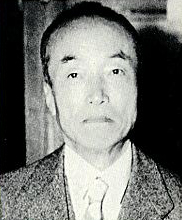
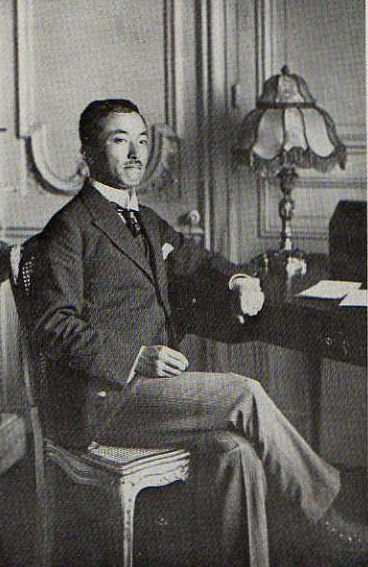
Prince Naruhiko Higashikuni (東久邇宮稔彦王 Higashikuni - no - miya Naruhiko Ō, 3 December 1887 – 20 January 1990) was the 43rd Prime Minister of Japan from 17 August 1945 to 9 October 1945 for a period of 54 days. An uncle of Emperor Hirohito twice over, Prince Higashikuni was the only member of the Japanese imperial family to head a cabinet. He was the founder of the Chiba Institute of Technology.
Prince Naruhiko was born in Kyoto, the ninth son of Prince Kuni Asahiko (Kuni no miya Asahiko Shinnō) and the court lady Terao Utako. His father, Prince Asahiko, was a son of Prince Fushimi Kuniie (Fushimi no miya Kuniie Shinnō), the twentieth head of the Fushimi - no - miya, the oldest of the sesshu shinnōke or cadet branches of the imperial dynasty from whom an emperor might be chosen in default of a direct heir. Prince Naruhiko was a half brother of Prince Kuni Kuniyoshi, the father of the future Empress Kōjun, the wife of Emperor Hirohito. His other half brothers, Prince Asaka Yasuhiko, Prince Nashimoto Morimasa, and Prince Kaya Kuninori, all formed new branches of the imperial family (ōke) during the Meiji period.
Emperor Meiji granted Prince Naruhiko the title Higashikuni no miya and permission to start a new branch of the imperial family on November 3, 1906. Prince Higashikuni Naruhiko married the ninth daughter of Emperor Meiji, Princess Toshiko (May 11, 1896 - March 5, 1978), on May 18, 1915. The couple had four sons.
- Prince Higashikuni Morihiro (盛厚王 Morohiro ō, May 6, 1916 – February 1, 1969); married Princess Shigeko, the eldest daughter of Emperor Shōwa and Empress Kōjun.
- Prince Moromasa (師正王 Moromasa ō, 1917 – September 1, 1923); died in the Great Kanto Earthquake.
- Prince Akitsune (彰常王 Akitsune ō, May 13, 1920 – August 30, 2006); renounced imperial title and created Marquis Awata Akitsune, 1940
- Prince Toshihiko (俊彦王 Toshihiko ō, born March 24, 1929); renounced imperial title and created Count Tarama Toshihiko, 1943; relocated to Lins, São Paulo, Brazil, 1950.
Prince Higashikuni Naruhiko was a career officer in the Imperial Japanese Army. In 1908, he graduated from the Imperial Japanese Army Academy and, in 1914, he graduated from the Army War College. He was commissioned a captain in the 29th Infantry Brigade, and promoted to major in the IJA 7th Division in 1915.
Prince Higashikuni then studied military tactics at the École Spéciale Militaire de Saint - Cyr in Paris France, from 1920 to 1926. Always somewhat of a rebel, Prince Higashikuni's behavior in Paris scandalized the Imperial Court. He had a French mistress, enjoyed fast cars and high living. He left his wife and children in Japan, and the death of his second son did not prompt his return. In 1926, the Imperial Household Ministry dispatched a chamberlain to Paris to collect him.
Upon his return to Japan, he was assigned to the Imperial Japanese Army General Staff Headquarters and eventually rose to the rank of major general, having successively served as commander of the 5th Infantry Brigade (1930 – 1934), the IJA 4th Division (1934 – 1937), and after the start of the Second Sino - Japanese War, the Imperial Japanese Army Air Service (1937 – 1938), and the IJA 2nd Army stationed in China from 1938 – 1939.
According to a memo discovered by historian Yoshiaki Yoshimi, Prince Higashikuni authorized the use of poison gas against the Chinese on 16 August 1938. Promoted to full general, The prince was awarded the Order of the Golden Kite, 1st Class in 1940.
Before the start of the Second World War, on 15 October 1941, outgoing Prime Minister Fumimaro Konoe proposed Prince Higashikuni to Emperor Hirohito as his successor for prime minister. Konoe believed that only a member of the Imperial Family with a distinguished military background could restrain the pro-war faction led by Generals Hajime Sugiyama, Hideki Tōjō, and Akira Mutō). Prince Higashikuni was also the choice of both Chief of staffs of the Army and the Navy.
However, both Emperor Hirohito and the Lord Privy Seal, Kido Koichi, believed that it would be inappropriate for a member of the Imperial Family to serve in that position, as he could be blamed for anything which went wrong in the war. Thus, two days later, Hirohito chose General Hideki Tōjō as Prime Minister. In 1946, he explained this decision : "I actually thought Prince Higashikuni suitable as chief of staff of the Army; but I think the appointment of a member of the imperial house to a political office must be considered very carefully. Above all, in time of peace this is fine, but when there is a fear that there may even be a war, then more importantly, considering the welfare of the imperial house, I wonder about the wisdom of a member of the imperial family serving [as prime minister]."
Six weeks later, Japan attacked Pearl Harbor. During the early stages of the Pacific War, Prince Higashikuni served as commander of the Home Defense Command from 1941 to 1944. Files of the Investigative Records Repository (IRR) made public in 2002 allege that he ordered the execution of the Doolittle Airmen.
Prince Higashikuni remained steadfast in his opposition to the war with the Allied powers, and was part of the conspiracy (with Prince Asaka, Prince Takamatsu, and former Prime Minister Konoe) which finally ousted Tōjō in July 1944 following the fall of Saipan to American forces. The American researchers with SCAP also found out that he had planned towards the end of the war to depose Hirohito, placing the minor Akihito on the throne instead, governing the country with himself as regent.
After the course of the war turned against Japan, and the decision was made to accept the Potsdam Declaration, Emperor Hirohito appointed Prince Higashikuni to the position of prime minister on August 16, 1945, replacing Admiral Kantarō Suzuki. The mission of the Higashikuni cabinet was twofold: first, to ensure the orderly cessation of hostilities and demobilization of the Japanese armed forces; and second, to reassure the Japanese people that the imperial institution remained secure. Prince Higashikuni resigned in October over a dispute with the American occupation forces over the repeal of the 1925 Peace Preservation Law.
On February 27 and March 4, 1946, Prince Higashikuni gave interviews to the Yomiuri - Hochi and New York Times newspapers in which he claimed that many members of the imperial family had approved Emperor Hirohito’s abdication, with Prince Takamatsu serving as regent until Crown Prince Akihito came of age. In the government, only Prime Minister Kijūrō Shidehara and the Imperial Household Minister opposed this.
In 1946, Prince Higashikuni asked Emperor Shōwa for permission to renounce his membership in the Imperial Family and become a commoner. Emperor Shōwa denied the request. However, along with other members of the imperial branch families (shinnōke and ōke), Prince Higashikuni lost his title and most of his wealth as a result of the American occupation’s abolition of the princely houses on October 17, 1947.
As a private citizen, Higashikuni operated several unsuccessful retail enterprises (including a provisions store, second hand goods store, and dressmaker's shop). He even created his own new Zen Buddhism - based religious sect, the Higashikuni - kyo, which was subsequently banned by the American occupation authorities.
The former prince became the honorary chairman of the International Martial Arts Federation (IMAF) in 1957, and honorary president of several other organizations.
In 1958, Higashikuni published his wartime journals under the title, Ichi Kozoku no Senso Nikki (or The War Diary of a Member of the Imperial Family). He published his autobiographical memoirs, Higashikuni Nikki, in 1968.
Former Prince Higashikuni Naruhiko died of heart failure in Tokyo on January 20, 1990 at the age of 102, having outlived his wife, two of his sons, his siblings and his nephew, Emperor Hirohito. Higashikuni is today mainly remembered as Japan's first postwar prime minister. He was one of the longest lived prime ministers of all time, along with Willem Drees, Christopher Hornsrud and Antoine Pinay.